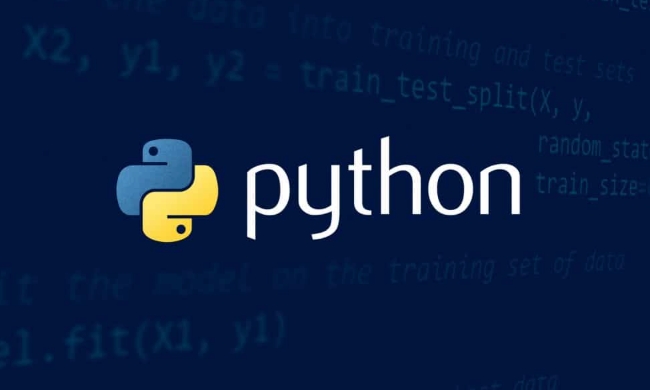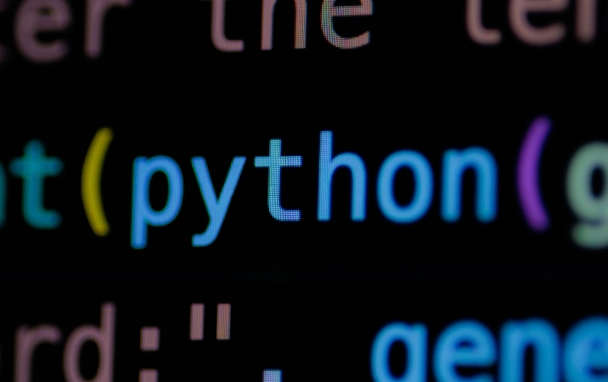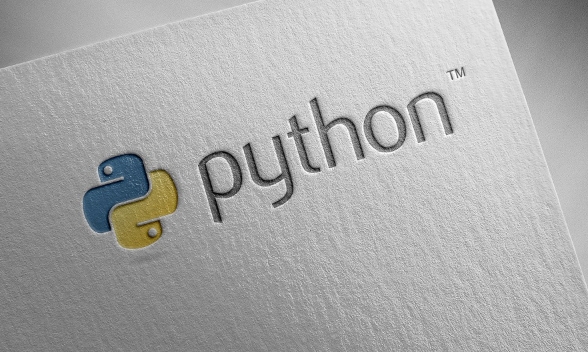 Backend Development
Backend Development
 Python Tutorial
Python Tutorial
 Strategies for Unit Testing and Integration Testing in Python
Strategies for Unit Testing and Integration Testing in Python
Strategies for Unit Testing and Integration Testing in Python
Jul 05, 2025 am 02:52 AMWriting good unit tests and integration tests is the key to ensuring the quality of Python projects. Unit testing starts from small things to verify whether the function behavior meets expectations. It is recommended that each function covers normal, boundary and exceptional situations, and use mock to isolate external dependencies; integration testing starts from the overall perspective to verify whether the collaboration between modules is smooth, and test clients and test data are commonly used to simulate real processes; test coverage should not blindly pursue high scores, but should pay attention to core logic and avoid formalism. Mastering these key points can effectively improve code stability and maintainability.

Writing good unit tests and integration tests is the key to ensuring the quality of Python projects. Many people initially think that testing is just a "double move", but once the project becomes larger and the logic becomes complex, the code without testing is like a time bomb. So the key is not how many tests to write, but how to write them effectively.

Unit testing: Start small and ensure the correct behavior of the function
The goal of unit testing is to verify that the behavior of the smallest unit is as expected, such as a function or method. Python has built-in unittest framework, and more concise third-party libraries such as pytest , which can be used to organize test cases.

Suggested practices:
- Each function has at least one test case covering normal input, boundary values ??and exceptions
- Use mock technology to isolate external dependencies (such as database calls, network requests)
- Try to keep the tests independent of order and run independently to avoid side effects affecting the results
For example, suppose you have a function that calculates the discount price:

def apply_discount(price, discount_rate):
if price <= 0 or not (0 <= discount_rate <= 1):
raise ValueError("Invalid input")
return price * (1 - discount_rate)The corresponding tests can include:
- Normal situation: 100 yuan off → 90 yuan
- Boundary situation: original price is 0 or discount rate is 0/1
- Exception: Incoming negative price or discount rate outside the range
Such tests can help you quickly discover potential problems when modifying function logic.
Integration testing: Starting from the overall perspective, ensure the modules are collaborative.
The focus of integration testing is not a single function, but whether the interaction between multiple components is smooth. For example, in a web application, the user login process may involve multiple links such as database query, token generation, API interface, etc. These require integration tests to verify whether the entire process is normal.
Common practices include:
- Use the test client to simulate real requests (such as Flask's
test_client()or Django's test client) - Prepare test data (fixture) for initialization state
- Testing the complete business process is not only the interface return code, but also depends on whether the final status is correct.
For example, when testing the registration function, not only should you check that the API returns 200, but you should also confirm that a user record is really inserted into the database, and the email notification is also sent successfully.
These types of tests are usually slower than unit tests, but they can expose problems that "no problem alone but error when combined".
Test coverage: Don’t blindly pursue high scores, pay attention to core logic
Many teams will set coverage targets, such as 80%. But the numbers themselves are not important, the key is where they need to be covered.
Practical suggestions:
- The core business logic must cover comprehensively, such as order processing, payment process, etc.
- If the tool-like functions are simple and clear, the number of tests can be appropriately reduced.
- Don't write "formalist" tests to make up coverage, such as calling a function once without making assertions
You can use coverage.py to analyze what code is covered by the current test, focusing on filling in the critical paths that are not covered.
Basically that's it. The more tests, the better, nor the faster, the better, but the better. The process of writing tests is actually an opportunity to re-examine the code structure. Many times you will find that the design is unreasonable, which promotes code optimization.
The above is the detailed content of Strategies for Unit Testing and Integration Testing in Python. For more information, please follow other related articles on the PHP Chinese website!

Hot AI Tools

Undress AI Tool
Undress images for free

Undresser.AI Undress
AI-powered app for creating realistic nude photos

AI Clothes Remover
Online AI tool for removing clothes from photos.

Clothoff.io
AI clothes remover

Video Face Swap
Swap faces in any video effortlessly with our completely free AI face swap tool!

Hot Article

Hot Tools

Notepad++7.3.1
Easy-to-use and free code editor

SublimeText3 Chinese version
Chinese version, very easy to use

Zend Studio 13.0.1
Powerful PHP integrated development environment

Dreamweaver CS6
Visual web development tools

SublimeText3 Mac version
God-level code editing software (SublimeText3)
 Polymorphism in python classes
Jul 05, 2025 am 02:58 AM
Polymorphism in python classes
Jul 05, 2025 am 02:58 AM
Polymorphism is a core concept in Python object-oriented programming, referring to "one interface, multiple implementations", allowing for unified processing of different types of objects. 1. Polymorphism is implemented through method rewriting. Subclasses can redefine parent class methods. For example, the spoke() method of Animal class has different implementations in Dog and Cat subclasses. 2. The practical uses of polymorphism include simplifying the code structure and enhancing scalability, such as calling the draw() method uniformly in the graphical drawing program, or handling the common behavior of different characters in game development. 3. Python implementation polymorphism needs to satisfy: the parent class defines a method, and the child class overrides the method, but does not require inheritance of the same parent class. As long as the object implements the same method, this is called the "duck type". 4. Things to note include the maintenance
 Explain Python generators and iterators.
Jul 05, 2025 am 02:55 AM
Explain Python generators and iterators.
Jul 05, 2025 am 02:55 AM
Iterators are objects that implement __iter__() and __next__() methods. The generator is a simplified version of iterators, which automatically implement these methods through the yield keyword. 1. The iterator returns an element every time he calls next() and throws a StopIteration exception when there are no more elements. 2. The generator uses function definition to generate data on demand, saving memory and supporting infinite sequences. 3. Use iterators when processing existing sets, use a generator when dynamically generating big data or lazy evaluation, such as loading line by line when reading large files. Note: Iterable objects such as lists are not iterators. They need to be recreated after the iterator reaches its end, and the generator can only traverse it once.
 How to handle API authentication in Python
Jul 13, 2025 am 02:22 AM
How to handle API authentication in Python
Jul 13, 2025 am 02:22 AM
The key to dealing with API authentication is to understand and use the authentication method correctly. 1. APIKey is the simplest authentication method, usually placed in the request header or URL parameters; 2. BasicAuth uses username and password for Base64 encoding transmission, which is suitable for internal systems; 3. OAuth2 needs to obtain the token first through client_id and client_secret, and then bring the BearerToken in the request header; 4. In order to deal with the token expiration, the token management class can be encapsulated and automatically refreshed the token; in short, selecting the appropriate method according to the document and safely storing the key information is the key.
 How to iterate over two lists at once Python
Jul 09, 2025 am 01:13 AM
How to iterate over two lists at once Python
Jul 09, 2025 am 01:13 AM
A common method to traverse two lists simultaneously in Python is to use the zip() function, which will pair multiple lists in order and be the shortest; if the list length is inconsistent, you can use itertools.zip_longest() to be the longest and fill in the missing values; combined with enumerate(), you can get the index at the same time. 1.zip() is concise and practical, suitable for paired data iteration; 2.zip_longest() can fill in the default value when dealing with inconsistent lengths; 3.enumerate(zip()) can obtain indexes during traversal, meeting the needs of a variety of complex scenarios.
 What are Python type hints?
Jul 07, 2025 am 02:55 AM
What are Python type hints?
Jul 07, 2025 am 02:55 AM
TypehintsinPythonsolvetheproblemofambiguityandpotentialbugsindynamicallytypedcodebyallowingdeveloperstospecifyexpectedtypes.Theyenhancereadability,enableearlybugdetection,andimprovetoolingsupport.Typehintsareaddedusingacolon(:)forvariablesandparamete
 What are python iterators?
Jul 08, 2025 am 02:56 AM
What are python iterators?
Jul 08, 2025 am 02:56 AM
InPython,iteratorsareobjectsthatallowloopingthroughcollectionsbyimplementing__iter__()and__next__().1)Iteratorsworkviatheiteratorprotocol,using__iter__()toreturntheiteratorand__next__()toretrievethenextitemuntilStopIterationisraised.2)Aniterable(like
 Explain Python assertions.
Jul 07, 2025 am 12:14 AM
Explain Python assertions.
Jul 07, 2025 am 12:14 AM
Assert is an assertion tool used in Python for debugging, and throws an AssertionError when the condition is not met. Its syntax is assert condition plus optional error information, which is suitable for internal logic verification such as parameter checking, status confirmation, etc., but cannot be used for security or user input checking, and should be used in conjunction with clear prompt information. It is only available for auxiliary debugging in the development stage rather than substituting exception handling.
 Python FastAPI tutorial
Jul 12, 2025 am 02:42 AM
Python FastAPI tutorial
Jul 12, 2025 am 02:42 AM
To create modern and efficient APIs using Python, FastAPI is recommended; it is based on standard Python type prompts and can automatically generate documents, with excellent performance. After installing FastAPI and ASGI server uvicorn, you can write interface code. By defining routes, writing processing functions, and returning data, APIs can be quickly built. FastAPI supports a variety of HTTP methods and provides automatically generated SwaggerUI and ReDoc documentation systems. URL parameters can be captured through path definition, while query parameters can be implemented by setting default values ??for function parameters. The rational use of Pydantic models can help improve development efficiency and accuracy.





